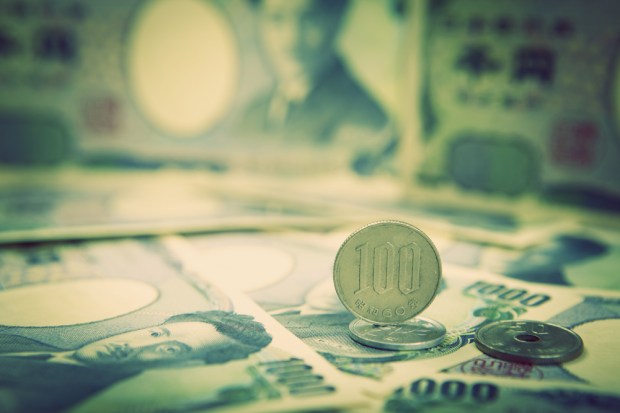Japan’s Cash Problem

Japan is one of the most technologically advanced and integrated nations in the world. For many, it’s one of the gold standard referents for technological advancement, robotics, gaming, mobile ubiquity and your everyday digital-age progress.
Except when it comes to cash. In that area, Japanese consumers are much more hesitant to embrace change (pun absolutely intended).
Cash in Japan was used for 80 percent of transactions by value, and 101 trillion yen ($966 billion) was circulating at the end of October — nearly double the amount of cash from 20 years ago. In the same timeframe, both the population and the economy of Japan have shrunk.
Looking at payment trends of internet users when at physical stores, a study found that nearly 70 percent of consumers across every age group mainly used cash when making purchases. Cash, cash on delivery and credit cards all beat out digital payments in popularity, with just 6.9 percent of respondents citing it as their go-to payment method.
The continued reign of cash in Japan is certainly not for lack of trying for alternatives. The Japanese government has repeatedly rolled out initiatives to augment the use and ease of card and mobile payments, although these initiatives were largely directed toward international visitors using cashless forms of payment while traveling and working abroad.
Also, there are more cashless pay terminals overall in Japan than in the U.S. — 1.9 million compared to 1.3 million, respectively. Many of those terminals are part of the mass transit system and are primarily used by tourists. Cashless payment options have been available in Japanese mass transit for nearly 13 years. Public transit seems to be the one sector where the Japanese public has truly embraced cashless payment.
The primary problem digital payments face preventing proliferation in Japan is security — specifically, the security concerns the general population has surrounding digital payments preventing them from adopting it into their transaction habits as quickly as other nations. Perhaps this inflated concern is a side effect of having a largely tech-savvy population.
Regardless, cash is undeniably costly. For example, it’s costing SMBs in the U.S. about $80.6 billion annually to deal with cash, despite the fact that the U.S. has far better integrated cashless payment habits into the general population.
One problem for Japan is that relying so heavily on cash limits bank policy options. Consider negative interest rates. Primarily cashless countries — like Sweden, Denmark or Switzerland, for example — have sustained negative interest rates of 0.5 percent, 0.65 percent, and 0.75 percent, respectively.
While Japan has a negative interest rate of 0.1 percent, any attempt to further lower it would most likely lead to widespread cash withdrawals and cash hoarding. Preventing these from occurring may have been one of the many reasons printing of the €500 note was halted across Europe earlier this year.
Future projections of Japan’s adoption of digital payments looks decent — especially after factoring in visits by an expected 20 million annual foreign tourists by 2020. At least the digital payments infrastructure exists for when the populace decides to engage, because cash is phasing out worldwide, whether anyone likes it or not.
For more information and updates on the state of cash in the global economy, take a look at the PYMNTS Global Cash Index™, a Cardtronics collaboration.
